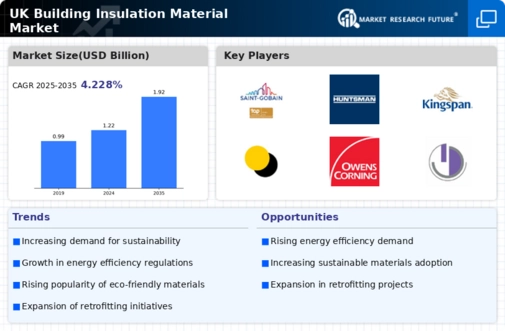The UK Building Insulation Material Market is characterized by a dynamic landscape driven by various factors, including sustainability concerns, government regulations, and an increasing focus on energy efficiency in buildings. Competitive insights within this market reveal key trends and shifts as companies adapt their strategies to meet the evolving needs of consumers and regulatory frameworks. The demand for advanced insulation solutions that can enhance energy performance in residential and commercial buildings continues to rise, prompting companies to innovate in product offerings and distribution channels.
Additionally, collaboration among industry players, partnerships, and mergers are common strategies employed to strengthen market positions and expand operational capabilities, indicating a robust competitive environment that stimulates growth and innovation. SaintGobain stands out in the UK Building Insulation Material Market due to its longstanding presence and reputation for quality. The company is recognized for its comprehensive range of insulation products designed to cater to various building needs, such as thermal and acoustic insulation options. SaintGobain emphasizes sustainability in its operations and product offerings, focusing on eco-friendly materials that align with contemporary environmental standards.
Its strong distribution network and commitment to research and development enable SaintGobain to introduce innovative solutions that resonate well with customers. The brand's investment in technology and capacity expansion further solidifies its position as a leader, allowing it to meet increased demand while ensuring stringent compliance with industry standards. Huntsman plays a significant role in the UK Building Insulation Material Market, particularly through its advanced polyurethanes and specialty chemicals that serve the insulation sector. The company's key products include high-performance, rigid foam systems that provide superior thermal insulation properties, enhancing energy efficiency in buildings.
Huntsman's market presence is strengthened by its focus on innovation and sustainability, as it continuously develops environmentally friendly solutions. The company has a history of strategic mergers and acquisitions that have bolstered its product portfolio and operational capabilities within the UK market. By diversifying its service offerings and enhancing its technological expertise, Huntsman is well-positioned to meet the evolving demands of the insulation market while maintaining competitiveness against other key players in the industry.




















Leave a Comment